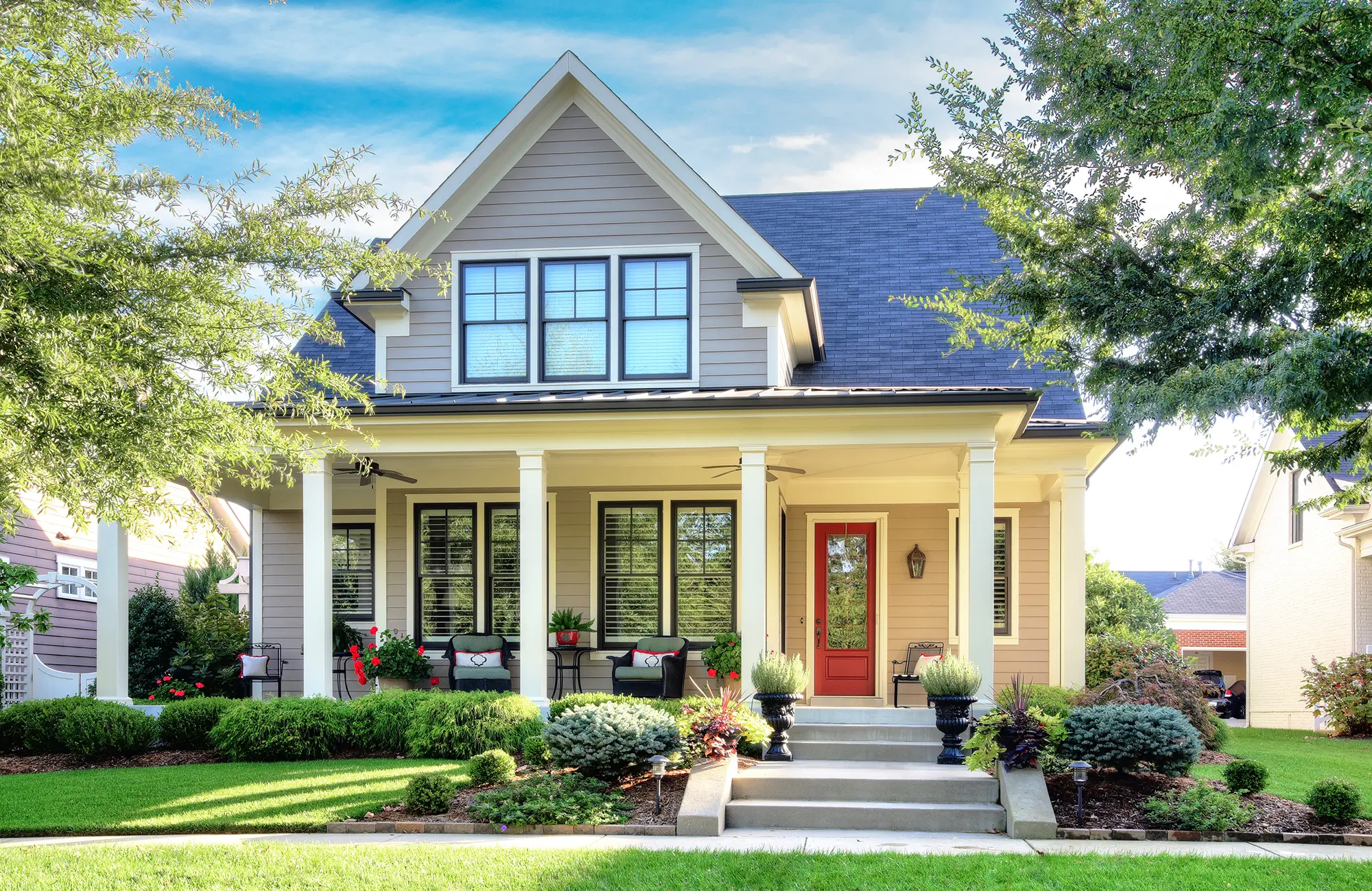Making the best siding choice for your house is an investment in the beauty, toughness, and value of your home. Siding materials come in a wide variety, from traditional wood to contemporary engineered alternatives. When choosing the ideal siding, it’s important to carefully consider your home’s architectural style, financial constraints, and local environment.
1. Understand Your Home’s Architecture: Harmonizing Style and Substance
Understanding your home’s architectural style is vital before exploring the world of siding materials. Colonial, Craftsman, Victorian, and Modern architecture all have distinctive design languages and visual signals. For instance, conventional lap siding is a great option since Colonial homes often have subtle beauty and symmetry, which highlights their timeless appeal. On the other hand, the sleek, minimalistic appeal of metal siding may be advantageous for a Modern house, which is distinguished by clean lines and creative design.
2. Evaluate Maintenance Demands: Balancing Beauty and Effort
When choosing siding, maintenance is an important factor. Natural wood siding has an unmistakable appeal, but to keep it weatherproof, it has to be stained or painted often. In comparison, vinyl siding is a low-maintenance option that just has to be cleaned once in a while to maintain its beauty. With less upkeep than wood, fiber cement, a mixture of wood fibers, cement, and sand, creates a balance between beauty and toughness. Your area’s environment has an impact as well; regions that experience severe weather may need siding materials that are more durable and can handle excessive heat, cold, or humidity.
3. Consider Environmental Impact: Embracing Sustainability and Responsibility
Siding materials have changed to provide environmentally friendly solutions in an age of environmental awareness. If environmental sustainability is important to you, think about using fiber cement or engineered wood. Engineered wood offers the warm aesthetics of real wood without destroying forests since it uses wood fibers bound with resin. Fiber cement is a strong and recyclable material that is made of cement, sand, and cellulose fibers. Additionally, look into recycled or reused siding materials to help save resources and reduce waste. Additionally, certain siding materials, like metal, are extremely recyclable, making them a good option for the environment.
4. Budget Wisely: Balancing Quality and Affordability
Budget factors unquestionably play a role in siding decision-making. While more expensive materials like actual stone veneer or cedar shakes radiate grandeur, more cost-effective choices like vinyl, engineered wood, steel log siding or fiber cement provide great beauty without going overboard. It’s crucial to create a balance between your aspirations and your financial limitations. Take into account the long-term expenses; certain materials could need a larger initial investment but cost less to maintain and replace over time. Additionally, look into siding substitutes that have the same aesthetic appeal as expensive materials but are less expensive.
5. Gauge Insulation and Energy Efficiency: Enhancing Comfort and Savings
The siding materials considerably improve the insulation and energy efficiency of your house. A pleasant interior atmosphere is ensured by proper insulation, which also lowers your energy costs. Improved thermal protection is provided by materials like insulated fiber cement and vinyl siding, which stop heat gain in the summer and heat loss in the winter. Insulated siding serves as a thermal barrier and relieves pressure on your heating and cooling systems, which eventually results in energy savings.
6. Explore Texture and Color: Crafting a Visual Masterpiece
The texture and color of your siding significantly influences the visual attractiveness of your house. Texture gives an otherwise bland facade dimension and personality, turning it into an interesting visual composition. For instance, board and batten siding creates a rustic elegance with its vertical panels and alternating broad and thin boards, while conventional lap siding emanates a timeless beauty with its horizontal boards. Investigate the many surface treatments that various materials provide, such as those on wood, vinyl, fiber cement, and metal. Consider color schemes that fit your particular style and the surroundings of your house as well.
7. Consult a Professional: Expert Guidance for Informed Choices
While your tastes and research are vital, consulting with a skilled siding contractor or designer may provide insightful details. Professionals may evaluate your home’s unique requirements while taking into consideration elements like the regional climate, subtle architectural details, and financial restraints. Their knowledge enables them to suggest products and designs that properly suit your needs. Additionally, experts may provide insightful guidance on installation methods to guarantee that your siding not only looks great but also performs at its best.
Conclusion
In conclusion, choosing the ideal siding for your house requires a careful balancing act between form, function, and utility. As you begin this transformational process, keep in mind that the siding on your house is more than just a decorative element; it’s a window into your personality and a magnificent canvas for your hopes and objectives.
